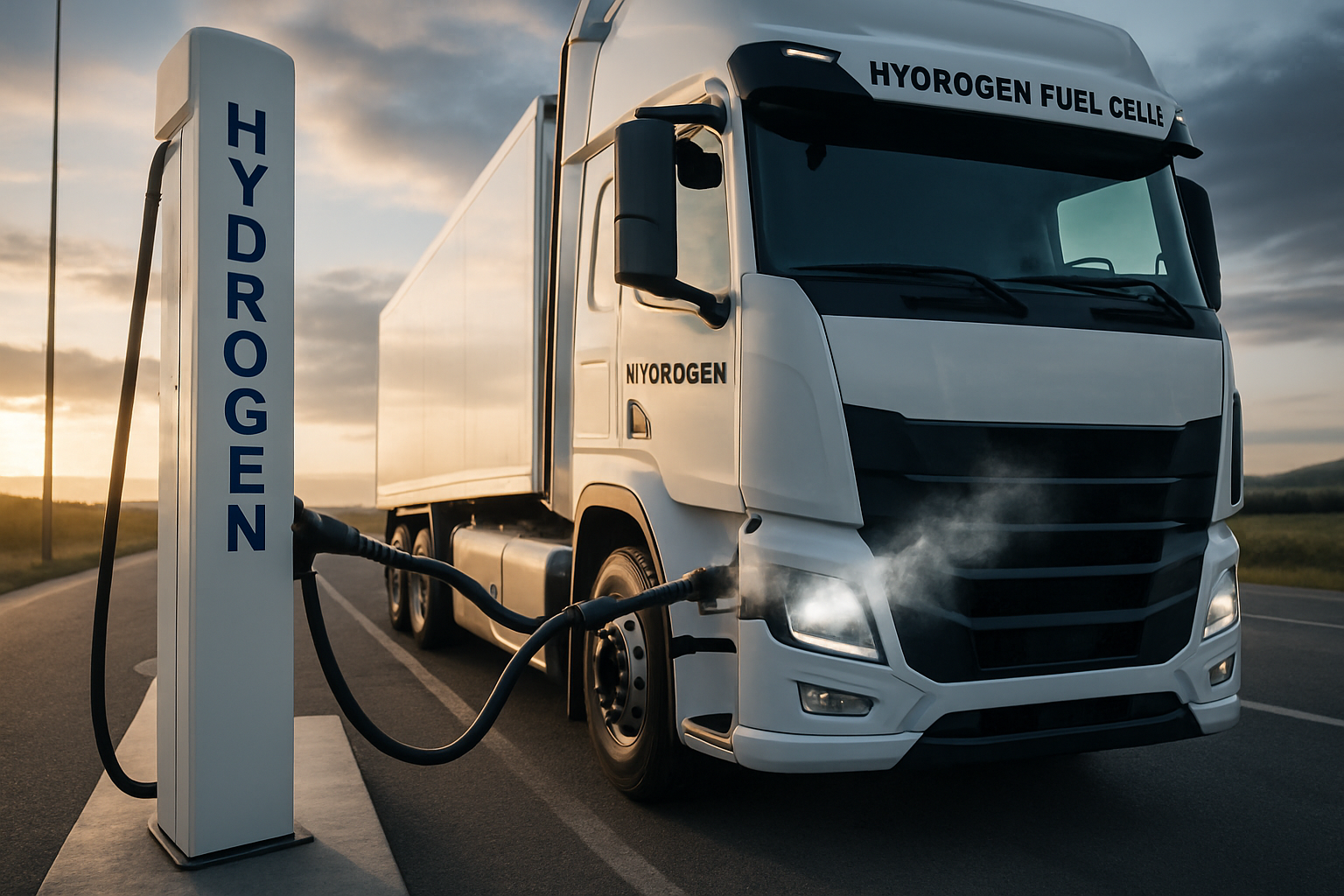Hydrogen Fuel Cells: The Sleeping Giant of Automotive Propulsion
In the ever-evolving world of automotive technology, hydrogen fuel cells have long been a tantalizing prospect. This cutting-edge propulsion system promises zero-emission vehicles with the convenience of quick refueling, potentially offering the best of both electric and conventional powertrains. Yet, despite their potential, hydrogen fuel cell vehicles have remained largely in the shadows of the automotive industry. Are we on the cusp of a hydrogen revolution, or will this technology remain a niche player in the automotive landscape?

A Brief History of Hydrogen in Automobiles
The concept of using hydrogen as a fuel source dates back to the early 19th century. In 1839, Welsh physicist William Robert Grove created the first rudimentary fuel cell, laying the groundwork for future development. However, it wasn’t until the 1960s that NASA began using fuel cells in its Gemini and Apollo space programs, showcasing their potential for vehicular applications. The first hydrogen fuel cell vehicle prototype, the Chevrolet Electrovan, emerged in 1966, but it would take decades before the technology approached commercial viability.
The Promise of Hydrogen Fuel Cells
Hydrogen fuel cell vehicles (FCVs) offer several compelling advantages over both conventional internal combustion engines and battery electric vehicles. Unlike battery-powered cars, FCVs can be refueled in minutes, providing a range comparable to gasoline-powered vehicles. They produce zero tailpipe emissions, with water vapor being the only byproduct. Additionally, hydrogen can be produced from various sources, including renewable energy, potentially offering a truly sustainable transportation solution.
Technical Challenges and Infrastructure Hurdles
Despite their promise, hydrogen fuel cells face significant obstacles. One major challenge is the production and storage of hydrogen. While hydrogen is the most abundant element in the universe, it doesn’t exist naturally in its pure form on Earth. Current methods of hydrogen production are energy-intensive and often rely on fossil fuels. Moreover, storing hydrogen requires high-pressure tanks or cryogenic systems, adding complexity and cost to vehicles.
The Chicken-and-Egg Problem
Perhaps the most significant barrier to widespread adoption of hydrogen fuel cell vehicles is the lack of refueling infrastructure. As of 2023, there are only a handful of hydrogen fueling stations worldwide, primarily concentrated in California, Japan, and parts of Europe. This scarcity creates a chicken-and-egg problem: automakers are hesitant to produce FCVs without a robust refueling network, while energy companies are reluctant to invest in hydrogen infrastructure without a significant number of FCVs on the road.
Current State of Hydrogen Fuel Cell Vehicles
Despite these challenges, several major automakers have invested heavily in fuel cell technology. Toyota, Honda, and Hyundai have all released commercial FCVs, with the Toyota Mirai being the most widely available. These vehicles demonstrate the viability of fuel cell technology, offering ranges of over 300 miles and refueling times of just a few minutes. However, their high cost and limited refueling options have restricted their appeal to niche markets and fleet applications.
The Role of Government and Industry Collaboration
The future of hydrogen fuel cell vehicles largely depends on collaboration between governments, automakers, and energy companies. Several countries, including Japan, South Korea, and Germany, have implemented hydrogen strategies aimed at promoting FCV adoption and expanding infrastructure. In the United States, California has been at the forefront of hydrogen initiatives, offering incentives for FCV purchases and supporting the development of fueling stations.
Potential Applications Beyond Passenger Vehicles
While passenger cars have been the primary focus of hydrogen fuel cell development, the technology shows promise in other transportation sectors. Long-haul trucking, in particular, could benefit from the quick refueling and long range offered by FCVs. Companies like Nikola and Hyundai are developing fuel cell trucks, with pilot programs already underway. Additionally, hydrogen fuel cells are being explored for use in trains, ships, and even aircraft, potentially revolutionizing multiple modes of transportation.
The Environmental Impact
The environmental credentials of hydrogen fuel cell vehicles are complex. While FCVs themselves produce zero emissions, the environmental impact of hydrogen production must be considered. Currently, most hydrogen is produced through steam methane reforming, a process that relies on natural gas and produces significant carbon emissions. However, the development of green hydrogen, produced using renewable energy and electrolysis, could dramatically improve the overall environmental footprint of FCVs.
Looking to the Future
As we stand at the crossroads of automotive propulsion technologies, hydrogen fuel cells remain a wild card. Their potential is undeniable, offering a unique combination of zero emissions, quick refueling, and long range. However, significant challenges in production, infrastructure, and cost must be overcome before FCVs can compete with battery electric and conventional vehicles on a large scale. The next decade will be crucial in determining whether hydrogen fuel cells will emerge as a major player in the automotive industry or remain a niche technology. As automakers, governments, and energy companies continue to invest in and develop this technology, we may yet see the sleeping giant of automotive propulsion awaken.





